For months, protestors have been chanting ‘Go Home’ at Sri Lanka’s powerful political family, the Rajapaksas. It has been 20 years since the Rajapaksa family dominated Sri Lanka’s politics.
Mahinda Rajapaksa, the former Prime Minister of Sri Lanka, and his brother Gotabaya Rajapaksa, the President of Sri Lanka, under them, the Rajapaksa family controlled nine significant ministries. They are accused of corruption and mismanaging the economy and made Sri Lanka fall prey to not just an economic crisis but also a political crisis. Mahinda Rajapaksa and his ministers’ resignation failed to quell the public anger.
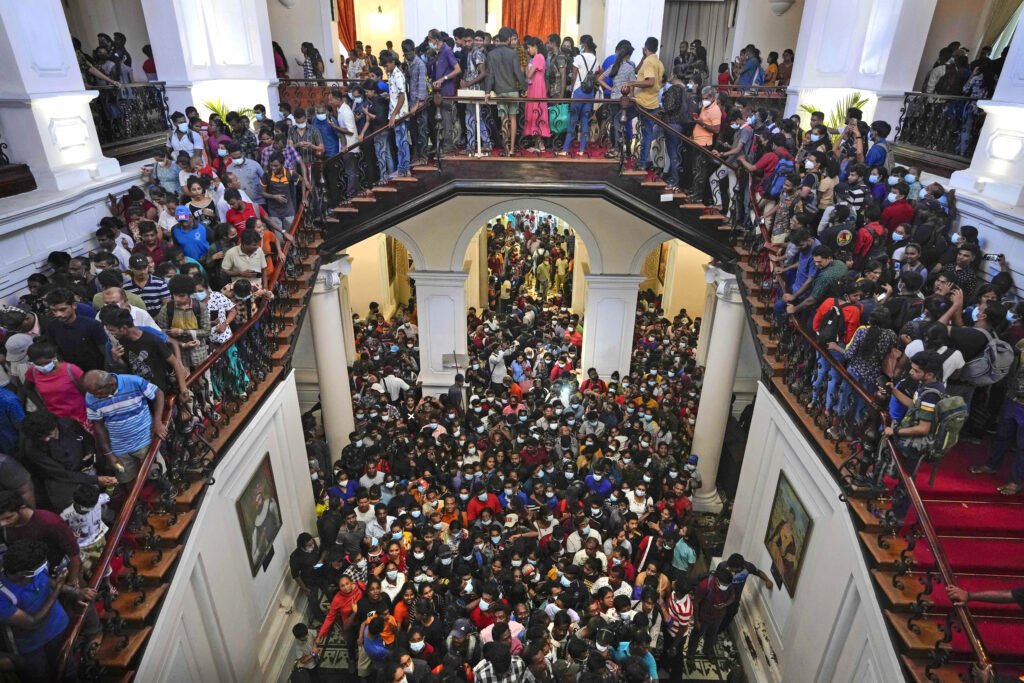
Image courtesy- Al Jazeera
Who are the Rajapaksas?
According to an online news portal Lankaenews, the Rajapaksa family are Catholics of Malaccan origin and then converted to Sinhalese for political gains. They lived in Seeduwa/Negombo area and later migrated to the villages of Sippukulam and Giruwapattuwa in the southern district of Hampanthottam (now known as Hambantota) with their ancestors.
The fact is that their name was not Rajapakssa either. Rajapaksa is a name that the British Raj gave to people that did an excellent job in Negombo/Seeduwa area. Happy with their work, the Britishers named them the Rajapaksa and gave a post named Vidhane Arachi in Ihala Valikada Korale. One of its family members, Don David Rajapaksa, held the feudal post and worked for the Britishers to collect revenues and maintain the area peacefully. Through this post, they become a much more influential family in the region.
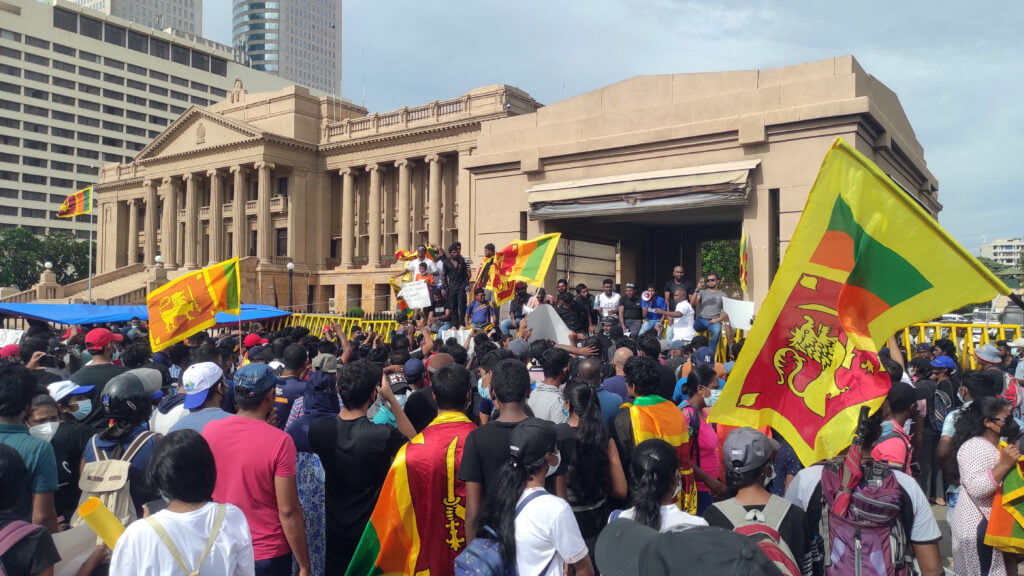
Political Journey
In 1936, the Rajapaksa family entered politics when Mahinda Rajapaksa’s uncle Don Mathew Rajapaksa represented the Hambantota district in the state council. He was succeeded by his younger brother Don Alwin Rajapaksa, father of the former Prime Minister Mahinda Rajapaksa and current President Gotabaya Rajapaksa. For almost three decades, the Rajapaksa family dominated the politics in the Hambantota district. However, the current generation has had the most successful leaders. Two of Don Alwin Rajapaksa’s sons became presidents of Sri Lanka, while other family members held various ministries and influential positions.
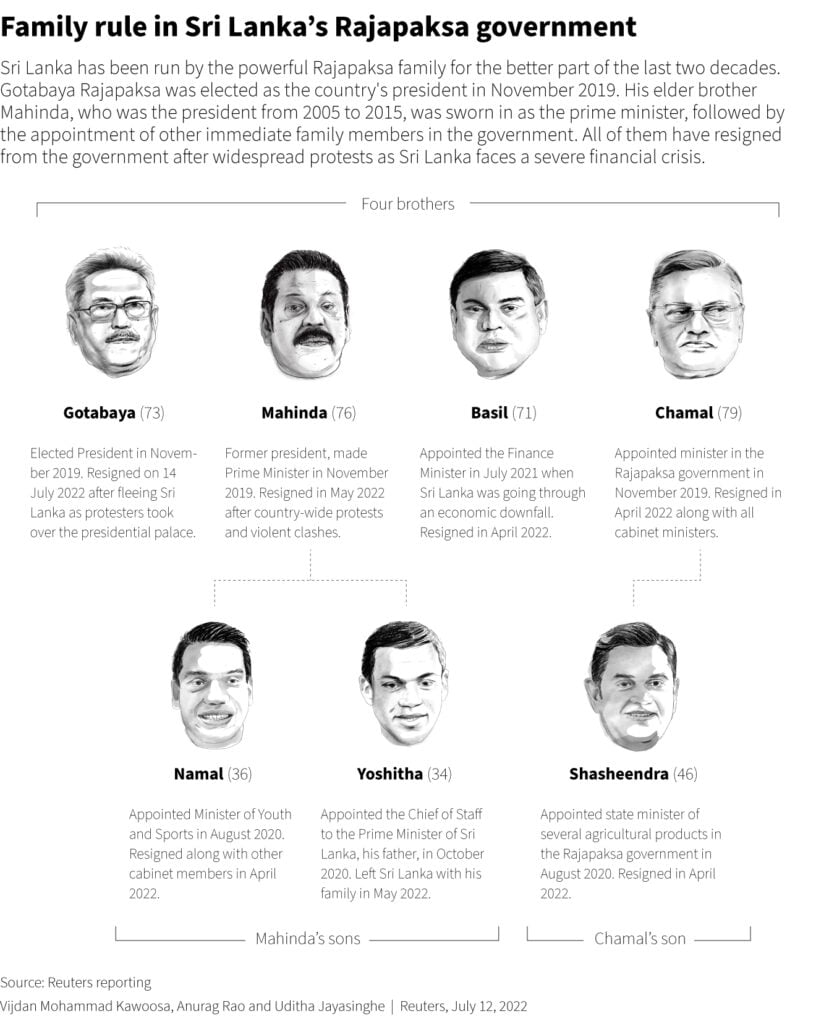
After Don Alwin, his son Mahinda Rajapaksa helped to cement the family’s ascent to prominence by becoming the prime minister and two-term president from 2005 – 2015. During his presidency, he appointed his family members to prominent political positions. His brothers Gotabaya Rajapaksa and Basil Rajapaksa became the Defence Secretary and Presidential Advisor, respectively.
In fact, during his second presidential term, from 2010 to 2015, 40 members of the Rajapaksa family held important government posts. Mahinda Rajapaksa took voters for granted, and his political arrogance led to his defeat in the 2015 presidential election. Sri Lankans elected a President from the opposition party; however, four years later, Mahinda Rajapaksa’s younger brother, Gotabaya Rajapaksa, won the 2019 election. Through this victory, political power returned to the Rajapaksa clan, appointing Mahinda Rajapaksa as Prime Minister and relatives back to prominent positions. Major ministries, including finance, irrigation, sports, law & order, urban development, etc., were under their direct control.
The family dynasty dominated Sri Lankan politics for nearly 20 years. However, the accusations of nepotism, corruption, and bad administration, took the Sri Lankan people to the streets to protest. Prime Minister Mahinda Rajapaksa and President Gotabaya Rajapaksa resigned and fled the country. Thus came an end to the Rajapaksa political dynasty.
Maladministration by the Rajapaksa Governments
Nepotism and family rule for nearly two decades has severely undermined the democratic setup of Sri Lanka. Let us look at how this island nation gradually fell into the current predicament under the Rajapaksa rule.
1. Policies of Gotabaya Rajapaksa
Gotabaya Rajapaksa’s failures extend from human rights violations to his policies favouring the rich. While serving as the Defence Secretary, toward the end of the Sri Lankan Civil War, his military killed more than 70,000 Tamilians. Reportedly many journalists and opposition figures were abducted, raped, and assassinated. According to the UN, this period reflects the crimes against humanity. But Gotabaya Rajapaksa never apologised for it. He, in fact, never acknowledged it.

Sri Lankan Tamils in 2009.
Image courtesy- Tamil Guardian
Besides, during his election campaign in 2019, Gotabaya offered a significant tax cut-off to prominent business officers and promised half value-added taxes. He also talked about abolishing many other taxes. Furthermore, he implemented these tax reductions when he came into power. However, the government’s revenue fell considerably. Usually, in a middle-income country, 13-15% of the GDP comes from tax revenue.
Nevertheless, the last year, it only earned 9% of its GDP from tax revenue leading to a drastic fall in the government’s purchasing power. Thus, the Sri Lankan economy took a massive hit.
In 2012, the Rajapaksa government banned chemical fertilizers overnight without informing the farmers and decided to turn its farming completely organic. The decision resulted in an enormous depletion of food products like rice, cardamom, cinnamon and black pepper. Thus, revenue from it was reduced.

Image courtesy- Reuters
2. Role of Basil Rajapaksa
Another major example of family politics is in connection with Basil Rajapaksa, the brother of Mahinda Rajapaksa. A controversial figure in the ministry, he holds dual citizenship in both the United States and Sri Lanka. This stopped him from getting a post in the Sri Lankan Parliament. The Rajapakse government amended the constitution to allow him into their cabinet.
3. Massive Debt Crisis
Debt is the crucial reason for the Sri Lankan crisis. As soon as the Rajapaksa government came into power, their debt rapidly increased. As a less self-reliant country, they started to import many items and borrowed money from organizations and countries. Currently, they have only 2 billion dollars in their forex reserves, and by the end of this year, they have to repay 8 billion dollars, which means four times their current reserves.
More than 70% of this debt happened during the rule of the Rajapaksa family. China has a significant role in such colossal debt accumulation. Out of the total debt Sri Lanka owes now, they have to pay a massive 10% to China. Furthermore, the Sri Lankan government borrowed heavy loans from China and several other countries to do large-scale projects, including the famous Hambantota Seaport. The port was economically unviable, and as the debt increased, Sri Lanka was forced to hand over the control of this port to China for 99 years.

4. Decline in Tourism
COVID and Russia-Ukrainecrises also contributed to Sri Lanka’s crisis. Tourism is a significant part of the Sri Lankan economy. During the lockdowns due to the pandemic, Sri Lanka’s tourism economy practically crumbled. Moreover, people began travelling to Sri Lanka again after lifting the lockdowns. However, 25% of them were Russians and Ukrainians. So, when Russia attacked Ukraine, Sri Lankan tourism suffered yet another massive hit.
The economic crisis led to political instability in the nation. Most of the ruling front members withdrew their support, and Mahinda Rajapaksa was forced to quit. However, the people were not ready to stay back from their protest until President Gotabaya Rajapaksa resigned.
Read to know more about the crisis – Understanding The Economic crisis of Sri Lanka- The Way Ahead!
Role of the Rajapaksas in the Present Crisis
Sri Lankan people are now united against this powerful family, the Rajapaksas. This is among the largest protests in the History of Sri Lanka. Students, teachers, journalists, lawyers, and daily wage labourers from different religions and regions have now taken to the streets.
Sri Lanka currently struggles with Asia’s worst inflation rate. Reportedly, the price of one-kilo rice is 200 Sri Lankan Rupees. One kilo of sugar is 290 Rupees, and one litre of petrol is above 300 Rupees.

An essential shortage of food, fuel, and even medicines has led to the declaration of a public emergency in the nation. Deployment of military officials in petrol pumps, postponement of essential medical procedures, 13-hour-long power cuts, and exam cancellations due to ink and paper shortage are a few instances of the present crisis.
The current political and economic crisis in Sri Lanka has many reasons. The budget deficit during the civil war to the current Russia-Ukraine conflict has adversely affected the crisis. Moreover, the Rajapaksas dynasty is the root cause of ruinating Sri Lanka’s economic and political stability.

The economic crisis has led to a grave shortage of petrol, kerosene and domestic gas in Sri Lanka.
Image courtesy- Reuters
Conclusion
According to the latest report from the island nation, President Gotabaya Rajapaksa has resigned as President after fleeing to Singapore. The Rajapaksa clan’s grip on power from the two decades of the family’s rule on Sri Lanka’s politics and wealth has thus finally reached a climax. However, the debt crisis will pose a severe challenge to Sri Lanka. The upcoming government will have to spend sleepless nights to revive the country back to stability.
About the Author
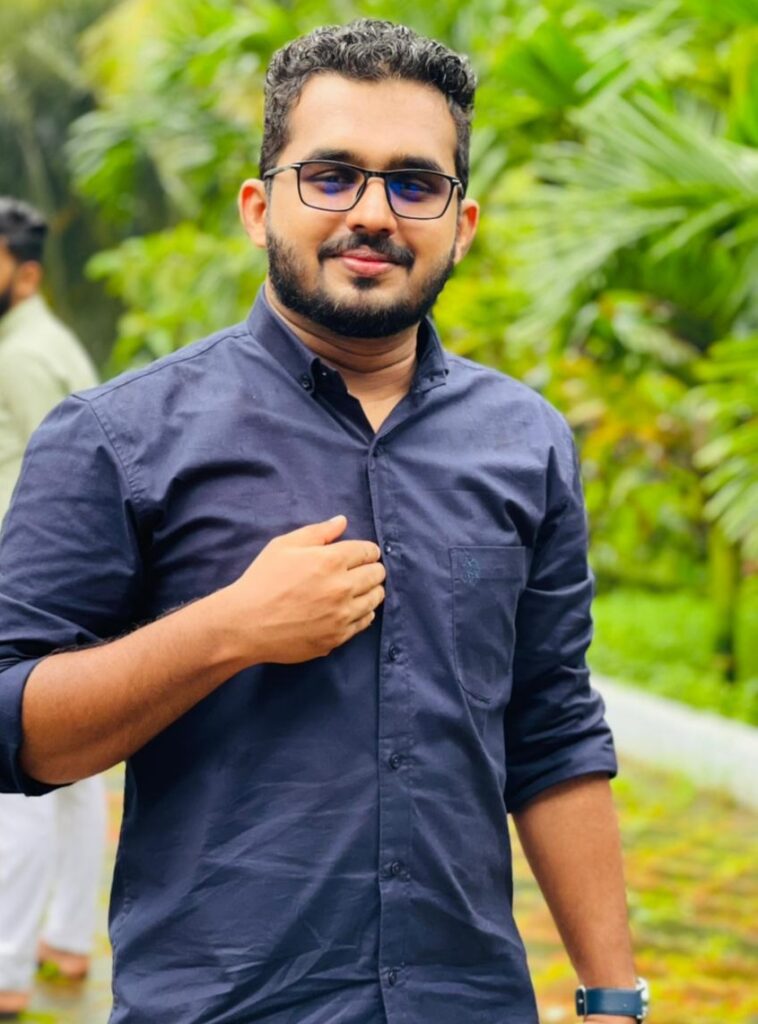
Anwar Shahid is an Academic professional in International Relations and Political Science with a broad knowledge of Research and Analytical Skills. He is currently working as an Assistant Professor in Political Science at Beja Model College of Arts and Science, Nettanige, Kasaragod, Kerala. He has a keen interest in the areas of International Cyber Security, Contemporary International Politics, Foreign Affairs, Diplomacy, and Indian Politics.

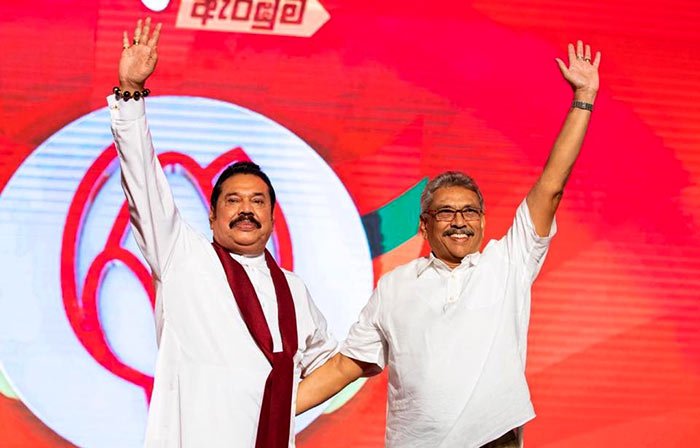





Very good studied report
[…] THE END OF THE RAJAPAKSAS […]